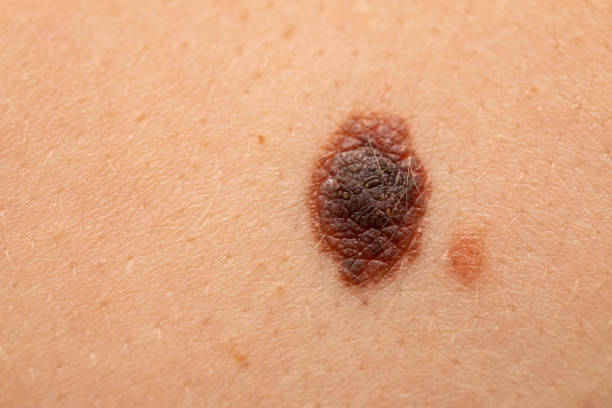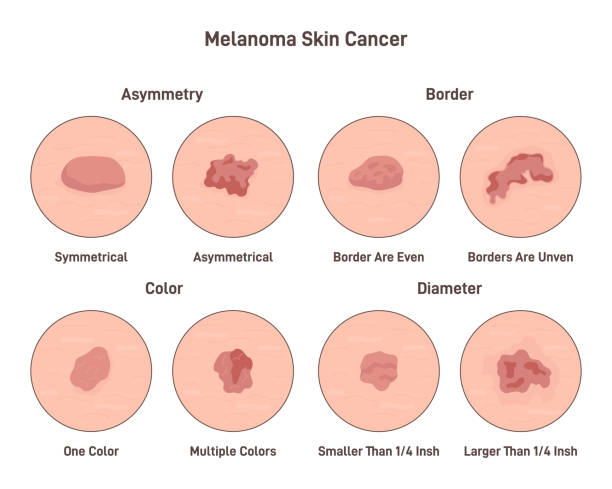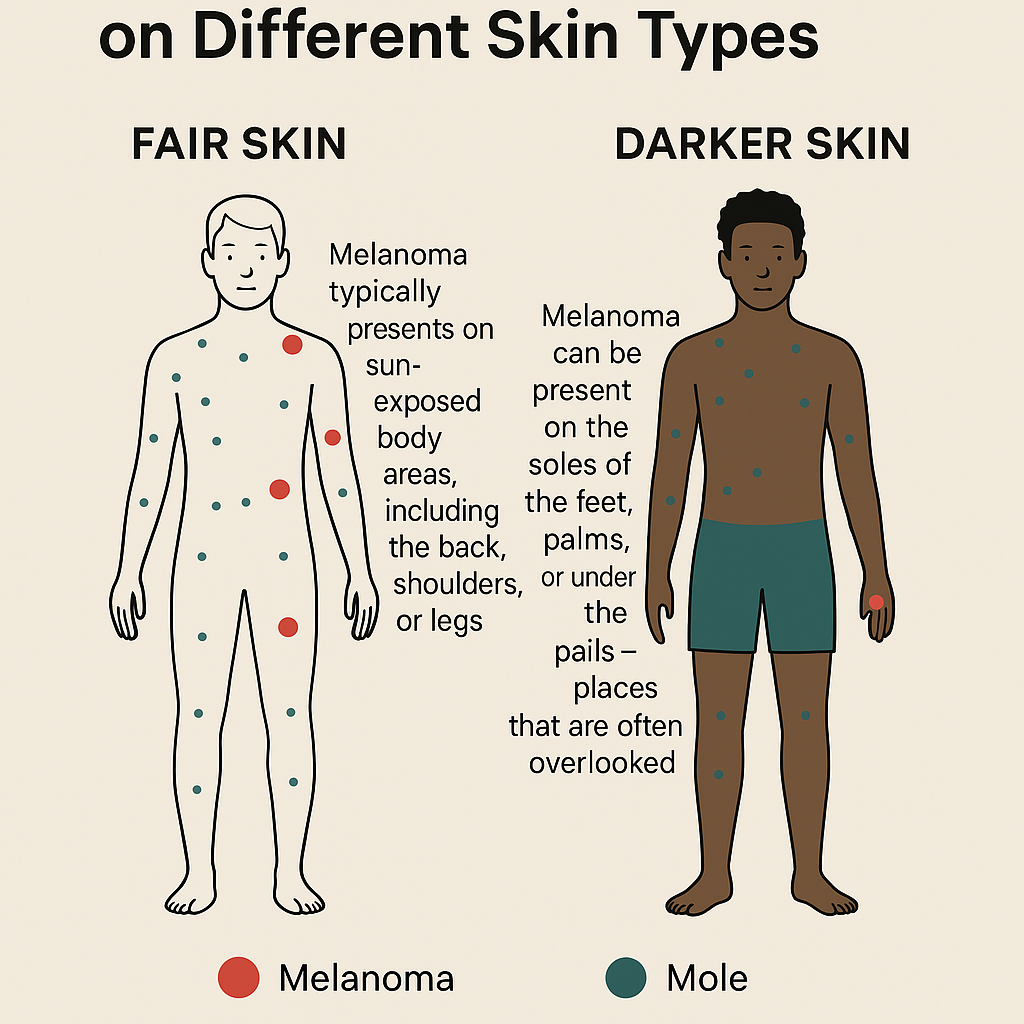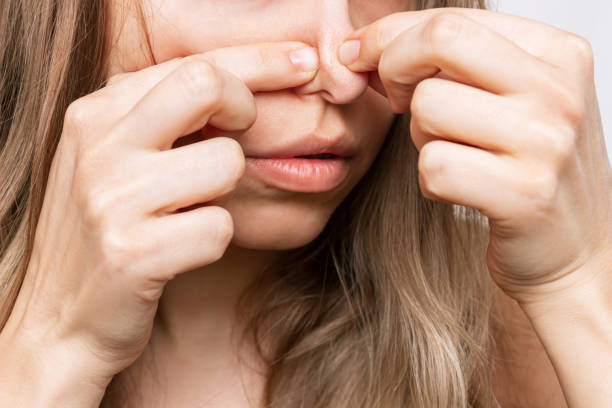We all have moles, those little spots on our skin, but how do you know if it is just a mole or something profound like “melanoma”? It is a question that can cause concern, and knowing the “difference between Melanoma vs Mole ” matters. This article simplifies and explains the early signs of melanoma, helping you determine when to see a dermatologist and take control of your skin health.

What Does Melanoma vs Mole Look Like?
Moles are typically:
- Small in size (smaller than 6 mm)
- Evenly colored (brown, tan, or black)
- Round or oval in shape, Consistent over time.
Melanoma is the deadliest form of skin cancer, but it’s highly treatable when detected early. On the other hand, it has an irregular appearance:
- Notched or irregular borders
- Asymmetrical shape
- Several different colors (black, brown, red, and even blue)
- Grows quickly or changes in appearance.
How to Spot Melanoma vs Mole with the ABCDE Rule
This dermatologist-approved method helps spot the early signs of melanoma at home:
A: Asymmetry. One half doesn’t match the other
B: Border. Blurry, jagged, or notched edges
C: Colour. More than one shade
D: Diameter. Larger than 6mm (pencil eraser)
E: Evolving. Changes in size, shape, or feel
What Does Melanoma Look Like?: Melanoma often presents with one or more of these ABCDE characteristics.
Natural Tip: When applying your moisturizer or DIY skincare oils, use that time for a quick mole check. Make it part of your daily skin love ritual.

The Importance of Self-Examination: A Wake-Up Call for Awareness
In a 2024 research study led by Lahore General Hospital in Pakistan, it was found that 81% of participants were unaware of melanoma, and 70% had never performed a self-examination (SSE) for skin changes, even though 57% had moles. This alarming statistic highlights two major issues:
- Lack of Awareness: Many people don’t understand the risks of skin cancer or the importance of regular checks.
- Failure to Perform Self-Exams: Even with moles, a significant number of individuals aren’t performing the simple but life-saving task of checking their skin regularly.
Why It Matters: A self-examination is a simple and effective tool for detecting skin cancer early. The earlier melanoma is detected, the higher the survival rate. This underscores the importance of education and awareness in early detection.
By regularly checking your skin for new or changing moles and spots, you can identify potential warning signs and take action before the situation becomes critical.
How to Check for Melanoma vs Mole at Home
You can check your moles for any new or suspicious growth. Here’s a simple way to check your moles:
Look at Your Skin: Start by looking at your skin in a well-lit area with a full-length mirror and a handheld mirror.
Look for New Growth: Look for any new growth or change in your moles.
Use the ABCDEs: For each of your moles, check and look for asymmetry, borders that are irregular, colors that are unusual, a large diameter, and evolution.
Take Photos: Don’t forget to take a picture of your moles to track if they change.
Get a Second Review: If you are unsure about a mole, you should get a review by your family doctor or a dermatologist.
Melanoma in Fair Skin vs. Darker Skin: What’s Different?

Contrary to popular belief, melanoma does not discriminate.
Fair skin: Melanoma typically presents on sun-exposed body areas, including the back, shoulders, or legs.
Darker skin: Melanoma can be present on the soles of the feet, palms, or under the nails – places that are often overlooked.
Mistakes to Avoid in Skincare That May Risk Your Skin Health
Using expired sunscreen
Ignoring unusual skin changes
Applying harsh DIY scrubs on sensitive areas
Skipping dermatologist visits
Overusing tanning beds or sunbathing without SPF
Ingredients to Avoid Near Suspicious Moles
| Ingredient | Why It’s Risky |
| Citrus oils | Photosensitivity → burns + DNA damage. |
| Fragrance | Irritates, masking mole changes. |
| Harsh retinoids | Thinned skin makes moles more fragile. |
Natural Skincare Recipe for Prevention & Awareness
Here’s an easy recipe for a gentle, antioxidant-rich body oil to keep your skin happy while looking for new or changing moles:
DIY Skin-Safe Glow Oil
You will need:
2 Tbsp of Jojoba Oil (helps balance sebum, gentle for all skin types)
1 tsp of Rosehip Oil (great source of Vitamin A – assists repair of UV-damaged skin)
3 drops of carrot seed oil (contains an SPF property)
1 capsule of Vitamin E
Optional: 2 drops of frankincense (supports skin cell regeneration)
Instructions: Combine all in a glass dropper bottle. Apply each day, after showering, and while checking for new or changed moles. Do not apply to open wounds or areas with active breakouts (if they are bothered).
When to See a Dermatologist: you see:
A new spot that looks unusual mole that changes quickly
According to Cancer Research UK, Moles that bleed, itch, or crust. It does not heal in 4 weeks.
In the UK, you can book an urgent referral through your GP, while in the US, many dermatologists have direct consults available and/or mole mapping.
Skin Cancer Prevention Tips You Can Start Today
Use sunscreen (SPF 30) every day (even in the winter if you’re going outside)
Reapply every two hours when you are outdoors
Avoid being in direct sunlight for prolonged periods (11 AM -3 PM)
Apply sunscreen to your ears, neck, scalp, and hands
Eat foods high in antioxidants, such as berries, leafy greens, and green tea
Avoid tanning beds – they increase melanoma by 75% (before the age of 35), according to the WHO.
Dermatologist-Approved Treatments
- Surgical Excision: The Gold standard for early melanoma.
- Immunotherapy: Drugs like pembrolizumab boost the immune response (75% success in Stage III cases).
- Targeted Therapy: For BRAF gene mutations (common in young patients).
Final Thoughts: Empowerment Through Awareness
The difference between a mole and melanoma can be subtle, but information is power. Simple habits, frequent skin inspections, and quality skin care products can protect your skin from the inside out. Spread melanoma awareness by passing this on to your friends and family. It only takes one person to pay attention — and it could be you.
AI Personalized Skincare: Future Routines for UK & USA
Have you ever felt lost in the endless aisles of skincare products, wondering which one…
How to Get Rid of Blackheads Fast at Home
Blackheads can be disappointing, especially when cleaning your skin quickly before a big day or…
How to Get Rid of Blackheads: 7 Proven Steps for Clear, Healthy Skin
Blackheads – Tiny dark spots caused by clogged pores – are a universal skincare concern. “Blackhead removal,” “How…
Glass Skin Routine for Dry Skin UK | Hydrated, Radiant Skin
Achieving glass skin for dry skin in the UK can feel impossible with the cold,…
Summer Skincare Guide: Prevent Sun Damage & Breakouts
As the days grow longer and the sun shines brighter across the UK and the…
Blue Light Damage & Skin: What You Need to Know (2025)
In our increasingly digital world, prolonged exposure to screens has raised concerns about the effects of…
Discover more from The Healthcare Diary
Subscribe to get the latest posts sent to your email.





